Free-Range Chickens in the Garden

As most of you already know, we currently have 5 pet chickens which we allow to free-range in our garden from dawn to dusk. They’re hilarious and sweet and make wonderful companions while I’m outside puttering around. Truth be told, I’m kind of obsessed with them and I’m pretty sure that love of chickens can be directly traced back to watching a lot of The Muppets growing up. Muppets fan, yourself? Here’s a little gem to get us all in the mood:
Still with me? In my last post, I mentioned how last June we brought home Ginger and Nutmeg to join our small flock including Maple, Bonbon and Cocoa. Jesse and I referred to this new pairing as “Chickens 2.0” because we had learned so much from raising the first 3 and really stepped up our game when it came to making sure they were safe and happy while also keeping our garden from being completely destroyed by busy beaks and fussy feet. So, for those of you wondering if you can keep free-range chickens and still have a tidy garden I’m here to say you can but it definitely takes some preparation and concessions. Here are some things we did to “chicken proof” our garden while still allowing them to free-range.
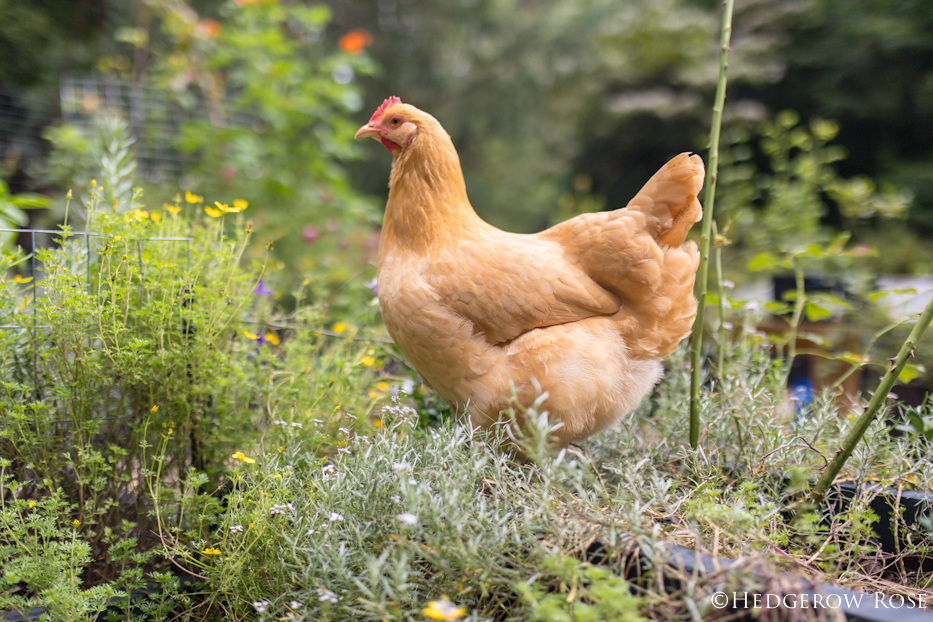
Ginger, a Buff Orpington, surveys her kingdom
Selecting the Right Breed:
I won’t get into the ins and outs of various breeds because I am in no way qualified to do so but we have learned that the heavier, fluffier chickens do far less damage in our garden and are less likely to fly over the fence or hop the garden barriers simply because they can’t get that airborne. Our Cocoa, a Cuckoo Maran, and Ginger, a Buff Orpington, are round, heavy puffballs with simply no interest in flying to freedom or digging to China. We’ve also learned that when a description for a particular breed of chicken specifically states, “makes a good forager” it’s safe to translate that as “will tear your garden apart.” If you have the land to let them roam around, the “good foragers” are really beneficial! Our Maple, an Ameraucana, is exactly that kind of chicken. They’ll clean your property up of all kinds of nasty little pests, including ticks, lickety-split. But, in a tidy, smaller garden, they are not as well suited. We have learned this the hard way.
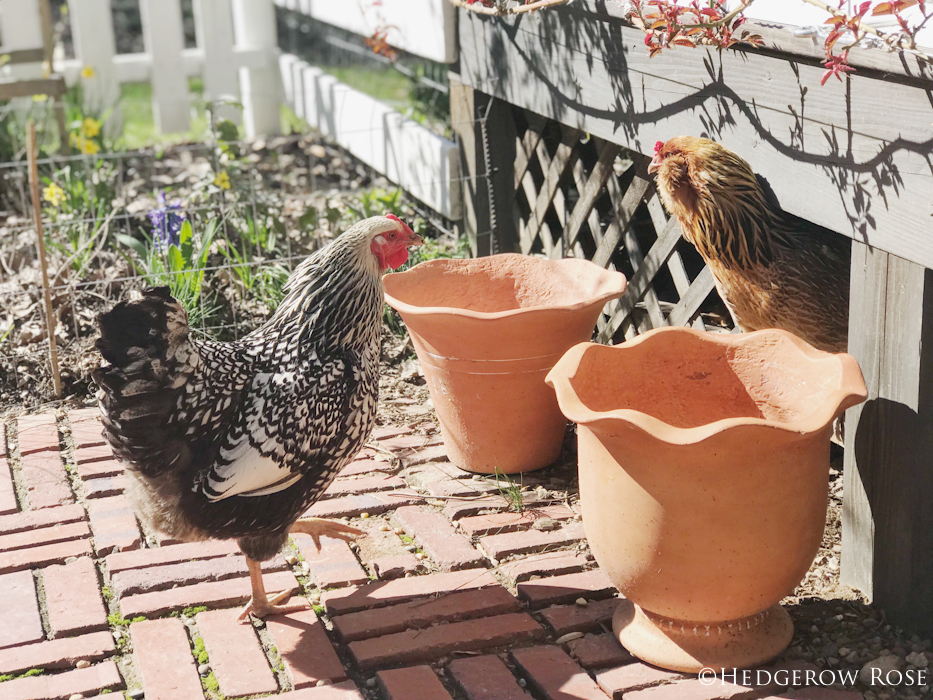
Bonbon, a Silver Laced Wyandotte, and Maple, an Ameraucana, use their “bolt hole” under the porch to hide from hawks
Protection From Predators:
In our North Carolina garden, we were living in the woods surrounded by all manner of predators: coyote, fox, mountain lions (yup!), raccoons, hawks, bears, you name it. Hawks were and are a constant concern. What we did to give our hens some protection from hawks was make sure they had plenty of hiding spots: mature shrubs to quickly sneak into and under and even a “bolt hole” under our porch. It’s important that they have these safe places placed all over the garden so they don’t get caught out in the open with not enough time to escape. Hawks aside, the other biggest threat were domesticated dogs. Our neighbor had one of his chickens killed by a pet dog that lived just a few houses down the road, who got loose one day and snapped up one of his chickens and killed it right in front of him. Pet dogs were constantly running around our neighborhood off leash. You can’t really do anything about dog owner incompetence but you can provide a secure boundary (my neighbor did not have his hens fenced in.) Before we brought home our first 3 girls, we enclosed an entire section of garden with fencing that ranged from 4′-5′ in height. We also stapled hardware cloth to the base and buried it down a ways to prevent something from simply trying to dig under the fence. And then, because we also kept bees in the same garden, we wired the fence and attached a solar fence charger to turn it on at night. There were many nights that we heard a “zap!” followed by a crashing back into the woods. Knowing the electric fence was protecting our girls and our bees allowed us to sleep better at night, that’s for sure.
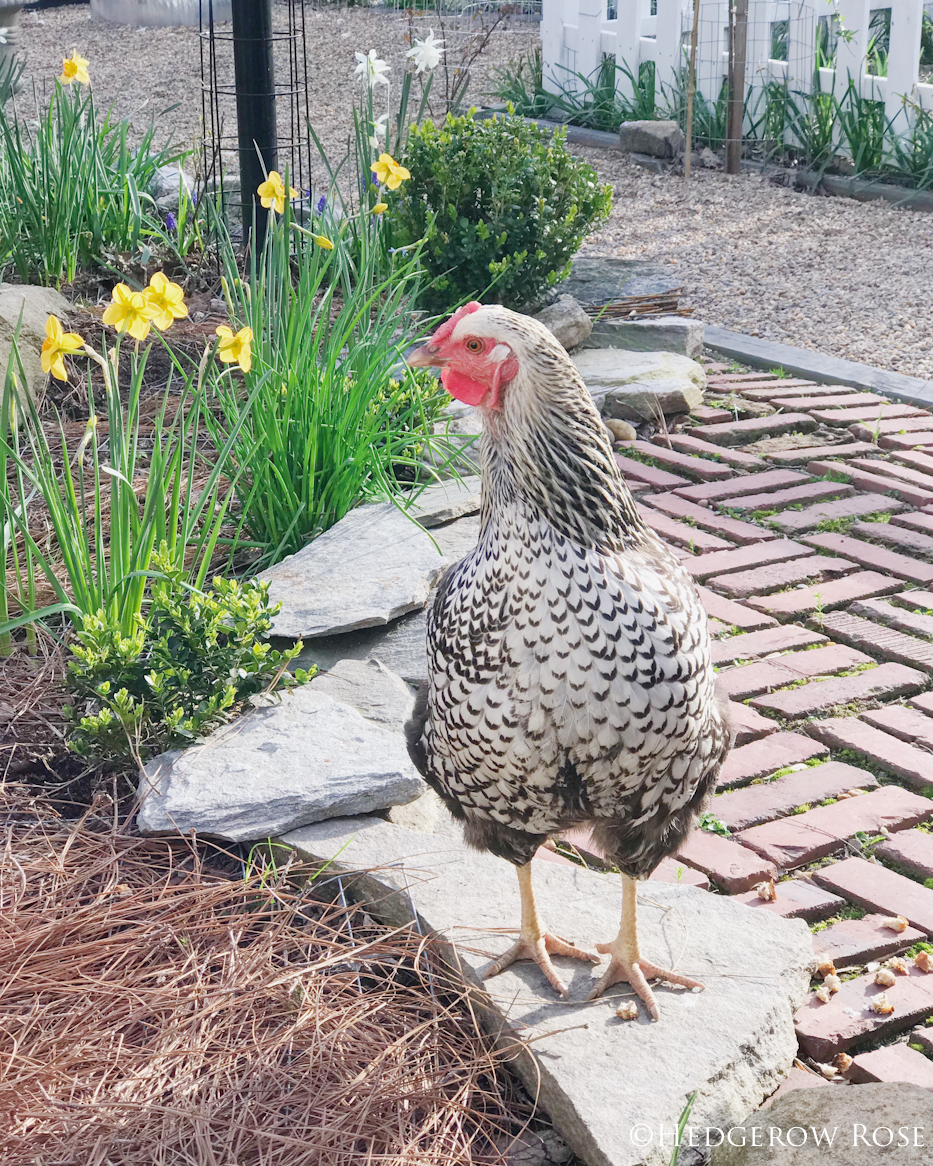
Underneath that pine straw next to Bonbon is a layer of hardware cloth to discourage the chickens from scratching around the plants. This also prevents squirrels from digging in there.
Protecting Garden Beds and New Plantings:
There is nothing so enticing to a chicken than a new planting or a raised bed. They simply lack all self control when they see that soft soil and before you know it they’re joyously flinging earth hither and thither and there goes your beautiful garden. This is also true for containers that they can easily hop into. Those will quickly become their new favorite dust bath and all your cute annuals you just planted will be tossed unceremoniously to the ground as they gleefully roll around. New plantings or anything freshly mulched to a chicken is like, I don’t know, how a giant hot fudge sundae would be to us. Plan for this and don’t assume your chickens will “leave it alone” without your intervention–because they won’t. (Now I really want a hot fudge sundae.)

Many of the containers were surrounded by galvanized wire mesh as a deterrent from jumping in
For raised beds and containers I have found what works best is making panels from galvanized wire mesh which I cut to size and attach each panel to rebar with cable ties. It really blends in, especially once the plants have had a chance to grow through the panels a bit. For new plantings such as shrubs, I use the same mesh to enclose the plant in a circle to prevent them from scratching at the delicate feeder roots while it gets established. In borders, especially areas where you often top off with compost or there are seedlings and suchlike, use the mesh to cut pieces and lay on top of the soil around the plants. Use landscape fabric staples to hold those pieces in place and cover the mesh, if you’d like, with some pine straw. (Covering with finer mulch will still give your chickens material to scratch in which kind of defeats the purpose if you’re trying to keep your garden tidy. For me, pine straw worked best as far as hiding the mesh in places where the plants didn’t conceal it enough.) Last, you can even use larger stones such as river rock to mulch around your garden. They’re just heavy enough that they can’t be pushed around by their feet.
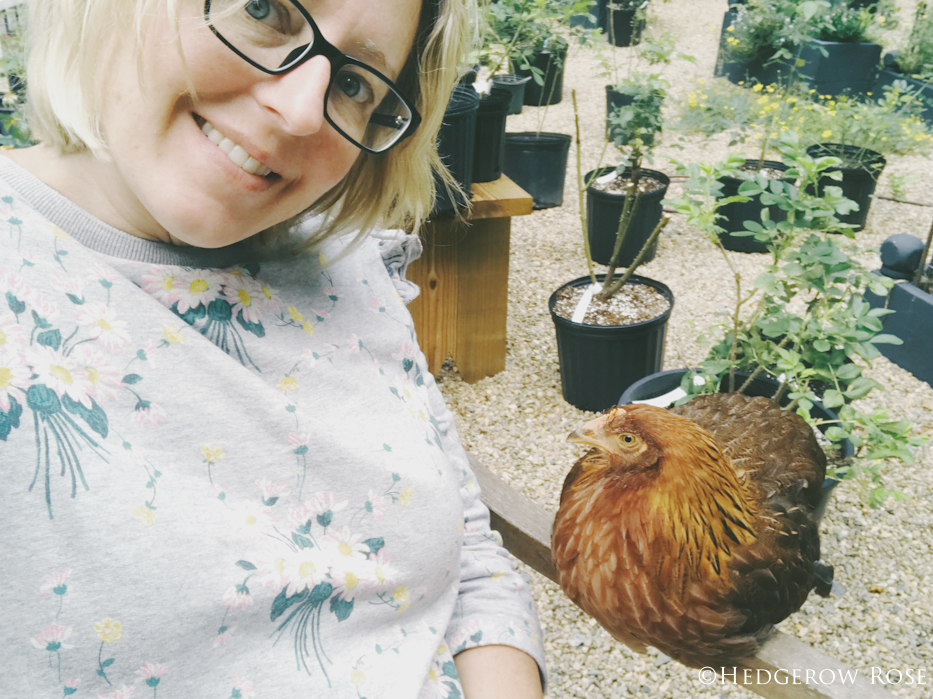
Me and my shadow. Nutmeg, a Welsummer, thinks I’m her mom and I’m OK with that. Having a garden that is safe for the hens means we can be outside together enjoying each other’s company.
Containers!
When it comes to containers, you can never have too many. They’re happier-looking in groupings and once you get started gardening with them, it can be quite addictive adding more to your landscape. Containers are also great pairings if you have free-ranging hens as you can get tall enough ones they can’t leap into. Simply watch out for putting containers near the fence so they don’t use it as a step-ladder to launch themselves out into the great wide world to seek their fortunes. For tons of inspiration using containers in a hen-friendly garden, check out Arthur Parkinson’s Instagram feed and he also has a book!
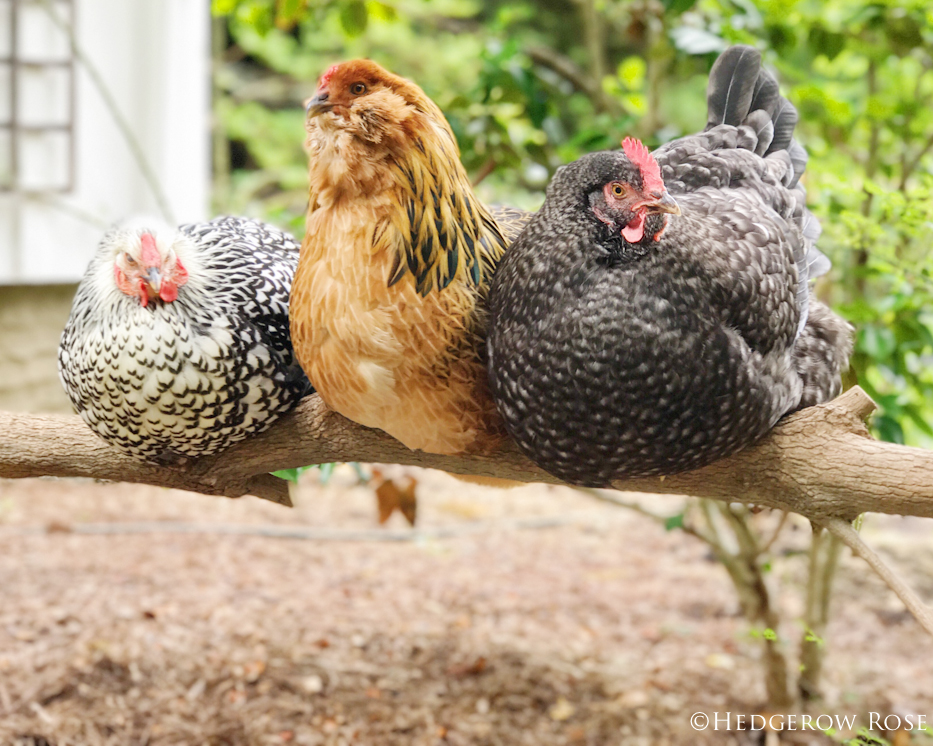
Bonbon, Maple and Cocoa relaxing on one of their many Rhododendron branches.
Making Your Garden Fun:
Fact: A bored chicken is a naughty chicken. If the whole garden is “off limits” with too many barriers and no place to dig and scratch what’s the point, right? We had our cultivated areas, sure, but we also made sure to leave lots of places where they could go wild and I just had to be OK with seeing some untidiness in those areas. Piles of leaves to scratch in, a raised bed of plain, soft soil just for them to dust bathe, large rhododendron branches tucked around the garden to use as perches, little dishes set at ground level around the garden for them to drink out of (in addition to their regular waterers), areas of stones and gravel for them to lay out and dry their feathers on after a rain shower. We’ve had people tell us that when they die they want to be reincarnated as one of our chickens. Point taken. But it was nice for us, too, that we could be in our garden relaxing or puttering around and not worry about their safety or what they were getting into. It was a joy to simply have their company!
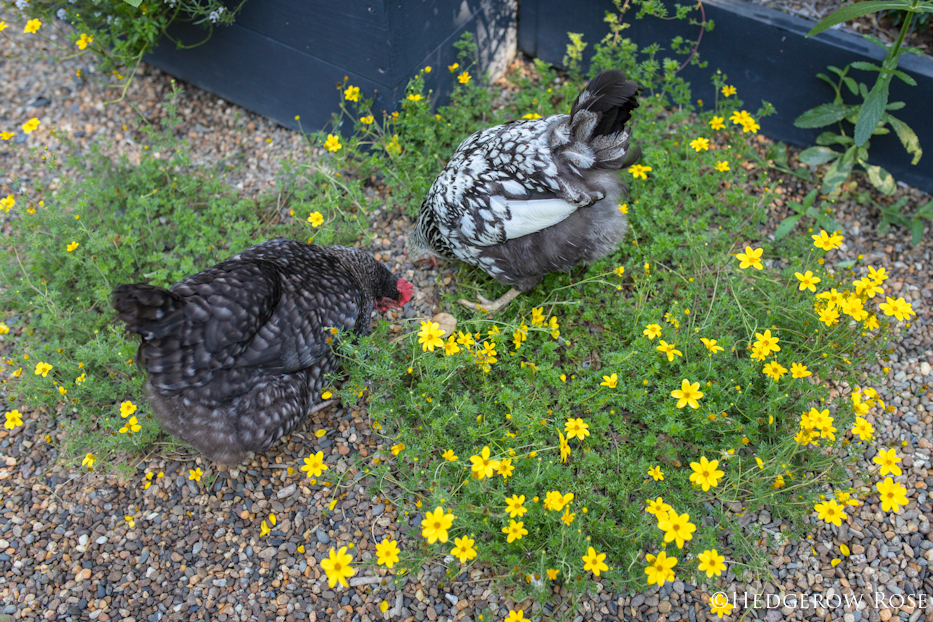
Bidens, an annual, will happily reseed in your garden. They’re pretty durable, too, as you can see here. Our hens stomp all over them but they keep growing and blooming.
Safe Plants:
I’ll allow you to do your due diligence on what kinds of plants might be dangerous for chickens. Consider if it’s poisonous to your children or pets, then think twice about allowing your chickens to be near it. Also, and I guess this goes without saying, don’t use any kind of -cide on your plants or on your soil if your chickens are going to be wandering nearby. I mean, this is common sense stuff, right? Case in point: Cocoa is particularly weird about taking bites out of the low-lying rose leaves. She sometimes eats it and sometimes she takes a bite and then spits it out whilst making unbroken eye contact as though to remind me of my place. In those cases I’m grateful that my roses weren’t sprayed with anything. Some plants they won’t bother with, probably because it tastes funny to them–lavender is a good example of this. And some plants–such as Bidens–make nice fillers where they walk around because they’re not bothered with being stepped on from time to time.
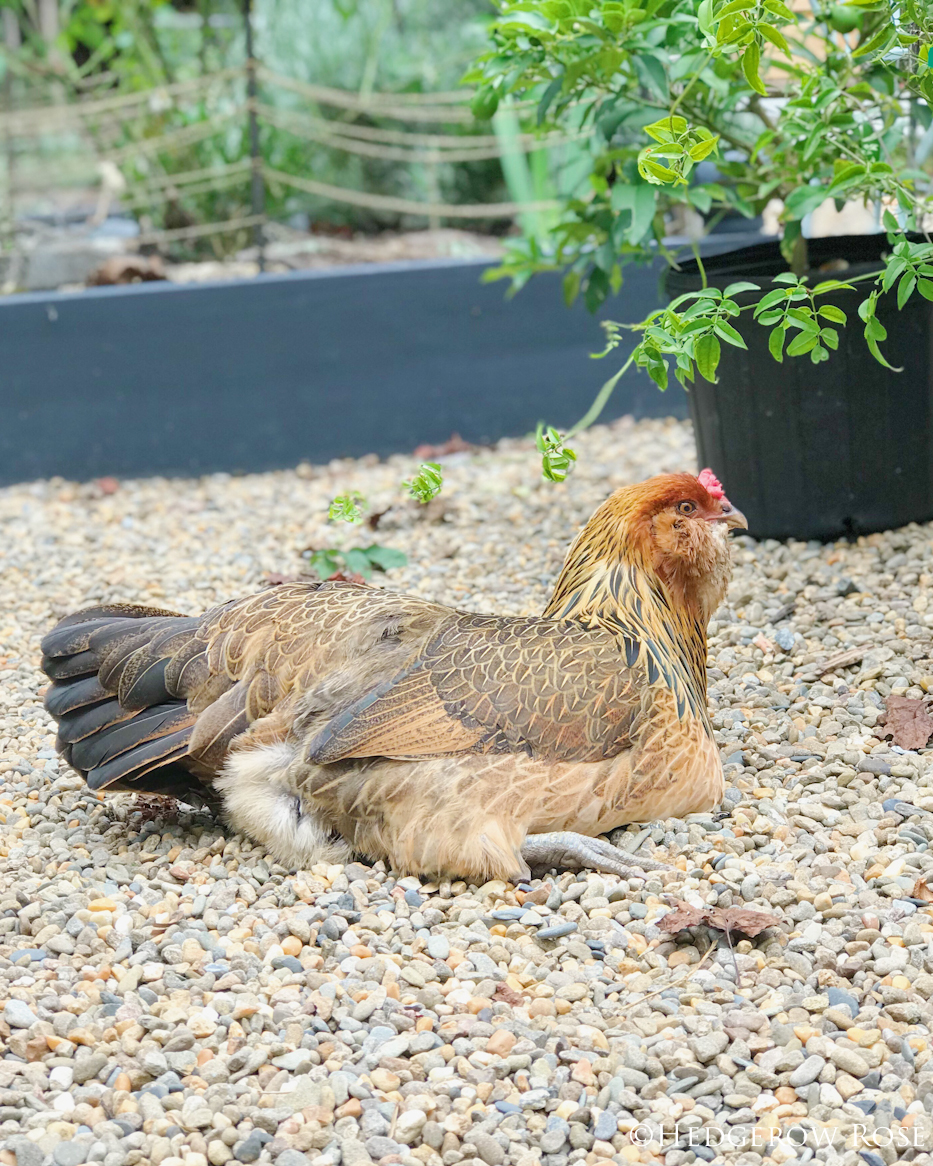
Maple warming up on the gravel one cool, spring afternoon.
Keeping Cozy
We get a lot of weather–wind, rain, snow–where we live, especially now that we’re back in Pennsylvania. Our chickens love to be outside and really only venture back into their coop to lay eggs and go to sleep at night. So, during the day, we made sure to give them places to take shelter from sudden rainstorms and suchlike in addition to their run. We learned that the pea gravel we spread throughout the garden was their favorite spot to preen their feathers after a rain and even sunbathe. The gravel was always nice and clean and it absorbed the sunlight making it slightly warmer, which was especially nice in the wintertime.
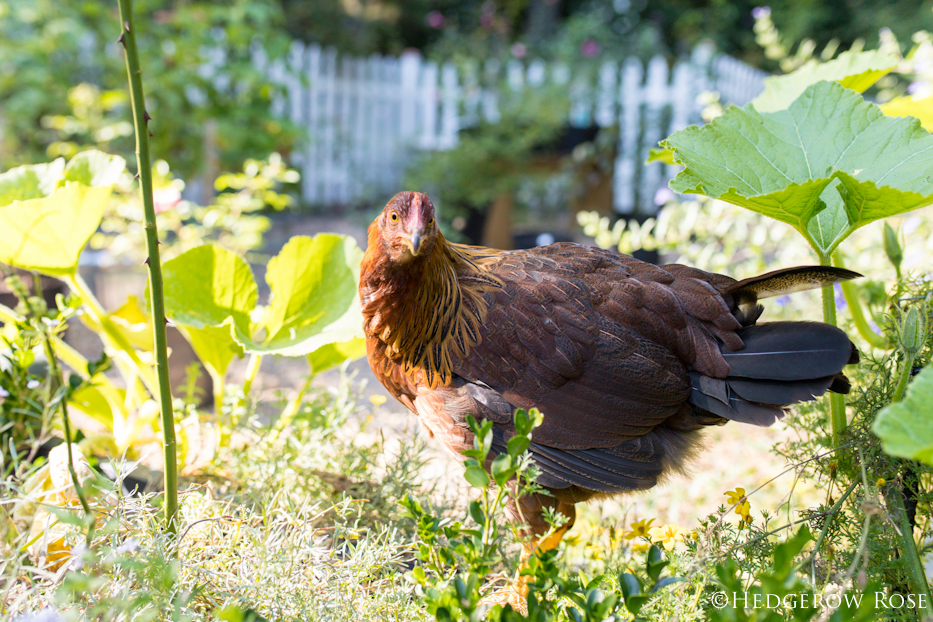
Nutmeg getting her new feathers! She was such a ragamuffin when we brought her home. Nutmeg is considered a “good forager.” She is very clever–too clever–and is one of the reasons we have had to take extra precautions to keep the chickens from being able to fly over the fence.
Now that we’ve moved, we have to do this stuff all over again and the girls are giving us a lot of side-eye that we’ve taken them away from such a paradise. (If you’ve ever been reproached by a chicken then you know how it can really mess with your whole feelings of self-worth.) We’re hoping that by summer 2019 they’ll have as good a garden to call home as they ever did before!
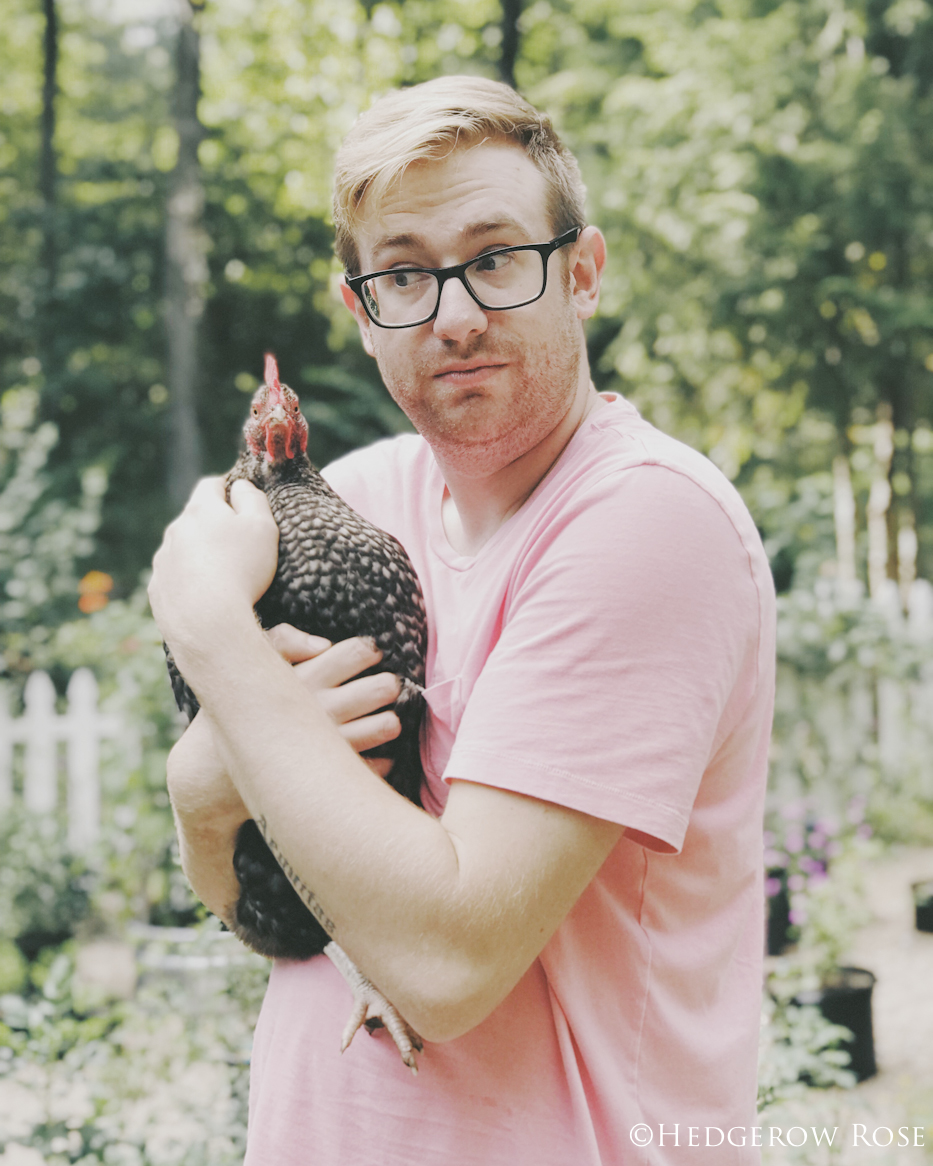
One of my favorite photos of Jesse, ever! Hilarious. Here he is with Cocoa, a Cuckoo Maran, both of them look a bit unsure of what’s going on.


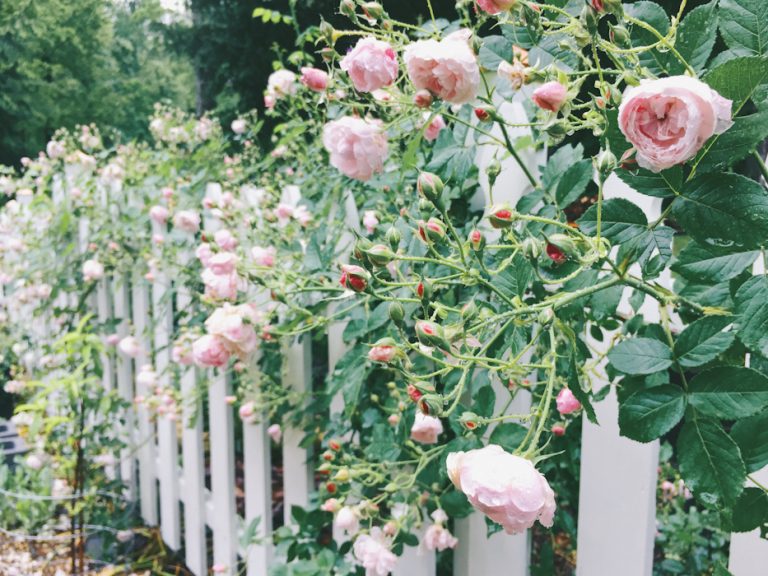
LOVE, love, love hearing about your chickens. Yes, all those pictures are fantastic, but the one with Jesse? Priceless!
Haha! I know…I LOL’d when I saw it–he and Cocoa have the same expression on their faces!